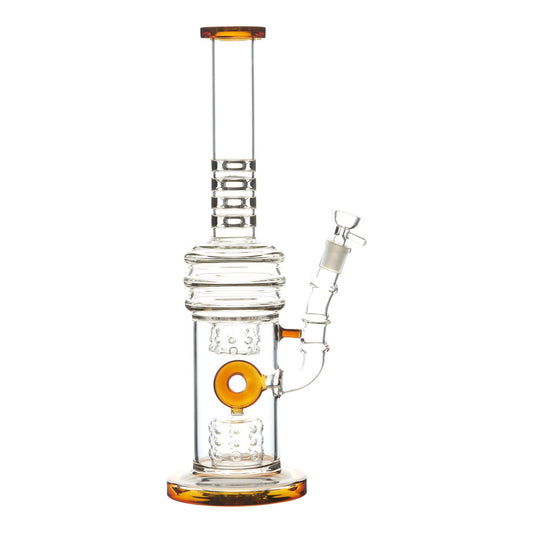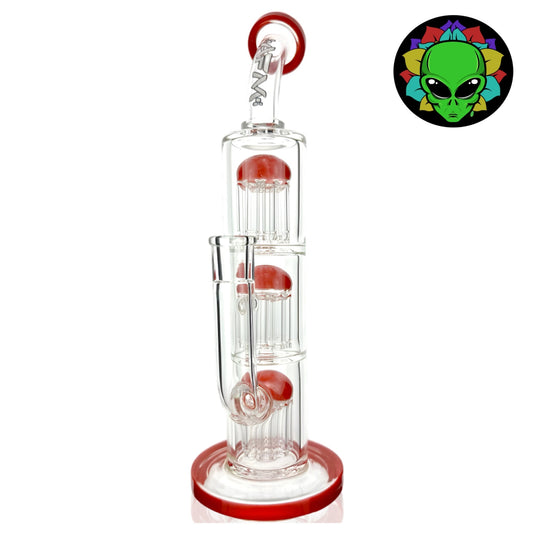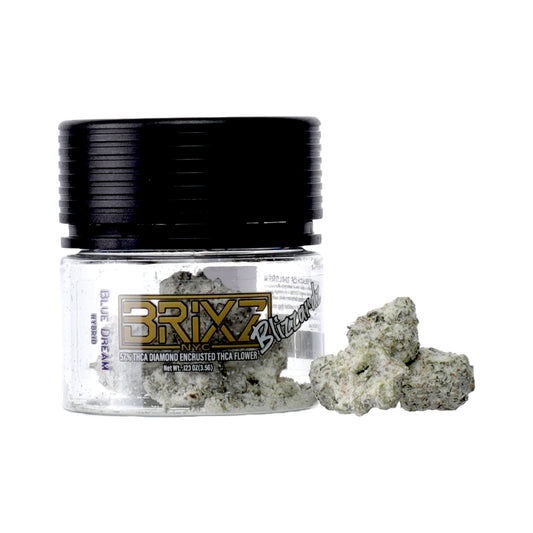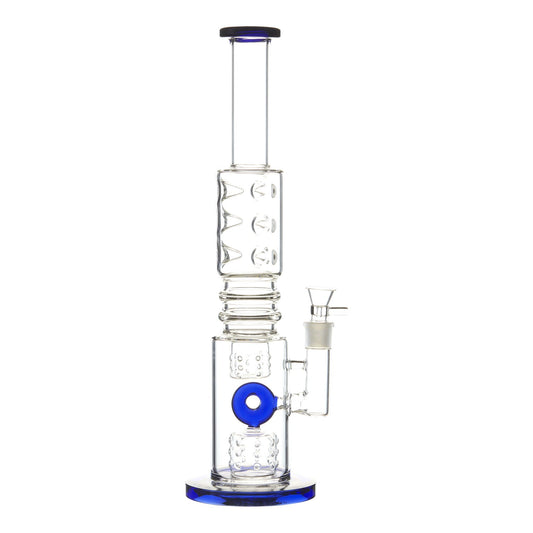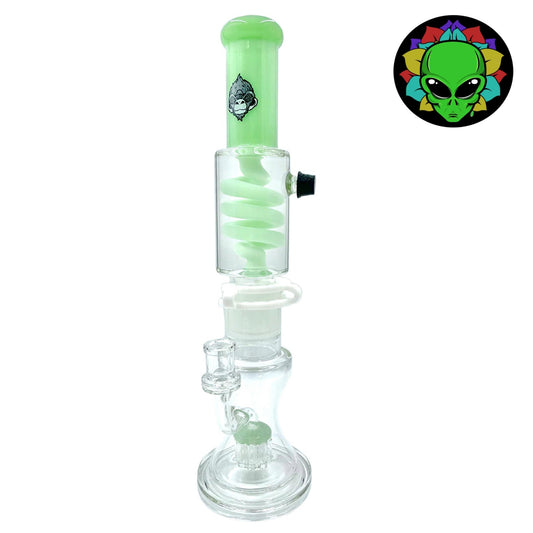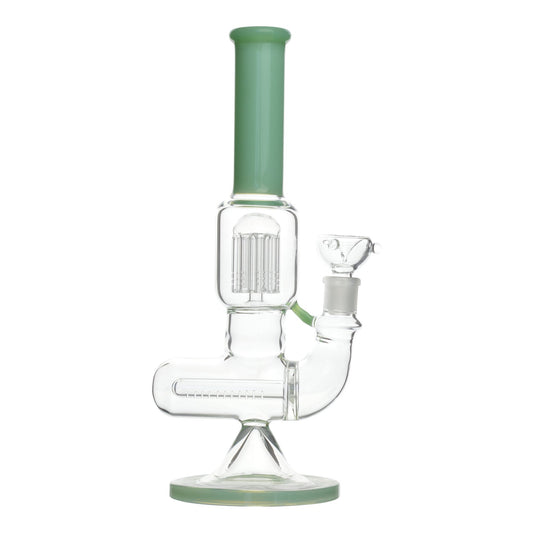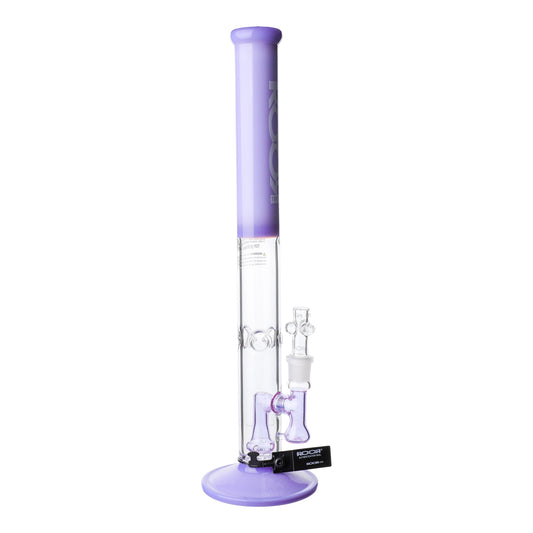Just like families that grow and need more space to live, plants also need to find a new, larger home to truly flourish when they outgrow their old one. Home cultivators that grow photoperiod strains will need to repot their plants at some point and there are some risks involved when doing so, which can include poor flower development, stunted growth, and sometimes even the death of the plant. After spending weeks tending to the plants, it’s hard to see one go. With the right plant knowledge plus some tips and tricks of the trade, the risk of this happening can be reduced exponentially if you’re willing to take the time to learn the proper steps and monitor the plants to know when transplanting them should take place. This extensive guide will be your cheat sheet to assure that the plants undergo the least amount of stress possible during the transplanting process and continue to grow healthier than ever, producing flowers to their fullest potential.
What is transplanting cannabis?
Transplanting is done for all types of plants. It refers to moving a plant and its roots from one place to another (mainly for outdoor grows) or from a smaller pot into a larger one as it gets bigger. To save soil and other resources, cultivators will grow seeds in small containers first until they know that it will sprout and whether or not it is a male or female plant (only females produce smokable buds). Despite being healthy and having sprouted, the males are typically tossed out unless the grower is breeding the plants. These seedlings will soon outgrow their containers and will need more room for their root system to form and sustain the growing plant. This is where transplanting comes in. Cultivators select larger pots and transfer the seedlings into new homes. This may sound easy, but plant roots are very delicate and it’s easy to unintentionally kill a healthy plant if transplanting is not done carefully at the proper time in the plant’s life cycle.
Why is transplanting plants necessary?

Transplanting is necessary for photoperiod strains since the root system grows rapidly and needs to remain strong throughout the plant’s life. As the growers say, strong, thick roots means large, potent flowers. In nature, plants have lots of room to grow both horizontally and vertically in soil, often working their way around rocks and other obstructions, but potted plants are limited in how large the roots can get based on the pot size. Several issues arise when a plant’s root system begins to get too big for the pot. Some reasons that transplanting is an essential step in the growing process include:
- Avoiding the plant getting root bound. This is when the roots are too cramped in the pot, essentially choking itself. Plants that are root bound become very sick, will stop growing, become stunted, and if left untreated, can eventually die. Some signs that a plant is root bound are sickly-looking new growth, less flower development, reddening of the stem, a droopy underwatered look, and signs of nutrient sensitivity or deficiency.
- Transplanting means healthier plants that will grow faster and larger since there is more space for the root system to spread out and draw water and nutrients up through the rest of the plant more efficiently.
What about autoflowering plants, can you transplant them?
Yes, you can transplant autoflowering strains, but there is a lot more risk involved and it’s best not to. This is one of the times when transplanting isn’t necessary. Autoflowering strains flower sooner and have a shorter life cycle than photoperiod strains. They’re also typically much shorter and smaller as well, so they grow and produce flowers perfectly fine in the same three to five gallon pot for the entirety of their lives. This also helps reduce costs since less soil and pots are needed.
Why not plant seedlings straight into their final home?
There’s actually two main reasons. The first being that it’s very easy to over water and overfeed plants when they are in pots that are too big for them. This goes for seedlings planted in 10 gallon pots and mature plants in 20 gallon pots. Extra-large pots are great and allow the root system to expand as much as needed, however be sure to monitor the saturation of the soil regularly since over watering causes all sorts of issues such as drowning, root rot, and mold that will kill plants. The second reason for not planting directly into large pots is that some seeds just don’t make it and when that happens, the soil used to fill a large pot will be wasted. Instead home growers start seeds in small very small pots so as to not waste precious soil if it doesn’t germinate.
If you’re wondering how to choose a pot size for your plants, the answer is pretty straightforward. Use smaller three to five gallon pots for autoflowering strains since they have a shorter life cycle. When cultivating photoperiod strains, try to use the largest pot size possible that will fit in the grow space. A 10 gallon size is preferred by most cultivators of photoperiod strains, but if growing outside, experiment with much larger sizes like 20 or even 50 gallon pots, which will allow the root systems to grow and expand naturally. Just remember not to oversaturate the soil by using a mister and closely monitoring the water schedule.
How often do you need to transplant plants?

To avoid undue stress, plants should be transplanted as few times as possible. Most home growers like to repot plants just once as a seedling into their final homes, while others prefer to follow the basic method used for repotting all plants, which is to double the size of the pot each time it’s transplanted. If following the later technique, the herb plants are typically transplanted twice. First from a small 2 gallon pot into a 5 gallon pot as a seedling, then again when it outgrows this pot into a final 10 gallon pot. If using the single transplant method, double check the plant’s watering schedule. What was fine for a smaller pot may be way too much water for the larger container to handle. Especially in the beginning, the small plant in the larger pot has a risk of drowning. Only water when needed and use a mister to ensure it’s not overwatered. If growing autoflowering strains, they don’t need to be transplanted at all, though nothing bad will happen if they are, it’s just a lot riskier. The reason for this is that autoflowers have a shorter lifespan and are known to be much smaller than photoperiod strains, so they don’t need as much room or large pots, which is ideal for small grow spaces. After germination, potting an autoflower in a 3 or 5 gallon pot will suffice.
How do you know when to transplant?

The key to successfully transplanting is to know the right time to do it. Too soon or too late and there can be issues with the plant’s development. Herb plants go through four stages in their lifecycle: germination, seedling, vegetative, and flowering. Plants should only be repotted during the seedling or vegetative stage. This is anytime after the seedling has three nodes or four to five sets of leaves and at least two weeks before the plant begins to flower. Transplanting cannabis in the vegetative stage is typically higher risk than at the seedling phase and by that point much more time, energy, and money has gone into nurturing it. If the plant outgrows the pot and is never transplanted or transplanting is done too late, it will become root bound and there is a high chance that the plant will go into transplant shock if it’s done once this happens. These are a few ways to know if the pot is too small and the plant needs to be transplanted. If any of the following occur, the plant should be repotted as soon as possible:
- Roots should never grow out of the drainage holes of the pot. If this happens, it’s a huge indicator that the root system needs more space and the plant should be transplanted as soon as possible to avoid them getting root bound and having issues with stunted growth.
- If the pot starts to get harder or expand in any way, this is another sign that the roots are too large for the pot. This happens when the roots begin growing around themselves and coiling tightly against the sides of the pot, putting pressure on the container.
- If the plant seems like it’s beginning to grow slower and slower or even seems to stop growing completely, it needs to be transplanted into a larger home.
- A final sign that a plant has outgrown its pot is if the plant soaks up all the water not long after watering it. If you’re beginning to use more and more water each time or are finding that your plants are extra thirsty and need to be watered more frequently than normal, this means there is not enough soil compared to the size of the root system. Herb plants do not need to be watered more than once per day at the most. If that happens, transplanting into a larger pot is necessary.
Step-by-step guide: How to transplant a cannabis plant

After putting so much time and money into germinating seeds, it can be very scary to think about moving them into a new home and potentially causing transplant shock, hindering growth, or even killing the plants. But if the proper steps are followed, transplanting is easy and it becomes an exciting step in the growing process that will lead to a healthier, stronger root system, massive buds, and a higher yield. After transplanting, home growers will quickly see the effects as the roots are able to get stronger and absorb nutrients and water more efficiently in their larger homes. Most cultivators transplant when the plants are seedlings, but some also transplant in the vegetative stage, though this is much riskier. Follow these step-by-step instructions to transplant seedlings with ease and minimize shock to the plants:
Equipment list
- Appropriately-sized pots for your grow space
- Plants to be transplanted
- Gardening gloves
- Soil
- Water
- Optional: soil pH meter, nutrients
Transplanting step-by-step guide
- Prepare for transplanting - Novice growers often overlook the preparation stage, which can be harsh to the plants after transplanting. To cause the least amount of stress, it’s important to make the new soil as similar as possible to the soil the seedlings are growing in. Do this by mixing in some of the old soil, adjusting the pH level to between 6 - 6.5, and adding nutrients if needed. Flushing the soil is a good idea for experienced cultivators. Always use potting soil, not garden soil which often has insects, and do a quick check to see if bugs are present. Having bugs attack stressed plants increases the recovery time and can slow down new growth.
- Sanitize the area - Clean off your workspace with water so there is no old soil around. If reusing pots, these should be scrubbed clean and dried beforehand. Wash and dry your hands thoroughly and put on gardening gloves to reduce accidental contamination.
- Prepare new pots - Add fresh soil to the bottom of the new pots. The soil should be fertilized and have a similar pH to the soil the seedlings are in to avoid shock. Add enough new soil so that when the plants are added to the pot, the top of the dirt sits roughly 1 to 1.5 inches below the rim.
- Transplant the seedlings - For this step, dim the lights if possible and be sure there is no intense light near the workspace. With the new pots ready and waiting nearby, remove the plants from the old pot by turning it upside down and giving the walls of the pot a squeeze. The seedlings and soil should drop out easily. Immediately place them into the larger pots, trying not to remove too much of the old soil or touch the root system too much. Try to do this step swiftly since leaving the plant out too long or exposing the roots to light for an extended time will severely stress the plant. All of these tips will help to lessen the risk of transplant shock.
- Watering - After transplanting, move the newly potted plants into your grow space and give them a healthy watering. The roots will need the water immediately in order to recover. Replace any equipment in your grow setup such as monitors, lights, and automatic watering systems. Check on your transplanted plants more often than usual to be sure they are adjusting to their new homes and aren’t showing signs of transplant shock or other issues.
How to avoid transplant shock?

There is always some risk involved when transplanting any type of plant and ganja is particularly susceptible to transplant shock. This term refers to plants that are put under high levels of stress due to moving them into a different pot or even to a different location. Plants grow best when left alone in the same place and when they’re moved, the change in environmental conditions such as temperature, soil, pH levels, humidity, water, or light puts them under stress, which can lead to slower or stunted development and even the death of the plant. Luckily, plants are able to recover from transplant shock with time and care, but herb plants that are brought back to life will have poor flower development. This is why it’s crucial to avoid overly stressing the plants at all costs. There are several ways to avoid transplant shock:
- Transplant at the right stage and time in the plant’s life cycle. This is the most important thing to remember! Seedlings should be transplanted into their final, larger containers once they have three nodes or around four to five sets of leaves. Plants can also be transplanted in the vegetative stage at the very latest, 2 weeks before flowering, but this is much riskier. Wait too long in a small pot, however, and the plant will be root bound, increasing the chance of damaging the root system while transplanting. Never, ever disturb a flowering herb plant. If you didn’t transplant by the flowering phase, it’s too late.
- Avoid transplanting in the dead of summer when growing outdoors! Early spring or late fall are the best times to transplant. Expert cultivators also recommend transplanting in the late afternoon when the temperature starts to drop. Indoor grows can be transplanted in late spring to early fall before any sign of frost.
- Never try to transplant autoflowering strains since they are more fragile and are very susceptible to transplant shock. There’s also no real need to transplant them since they have a short life cycle. Simply plant germinated seeds right into a three to five gallon pot, which will be their final homes.
- For indoor grow setups, always do transplanting in a dimly lit room and never in the presence of strong light. This is a given, but a key point to remember.
- Wear clean gardening gloves or wash your hands prior to touching the plant or transplanting. This will keep the fragile root system from getting contaminated.
- Keep the root ball moist at all times and never shake out dirt between the roots. Try to keep the entire root system and soil together during the process.
- Don’t transplant too much. Seedlings should be moved to a larger pot once in their lives to limit stress. Also, never rush the transplanting process. It takes time and patience with larger grows, but rushing can lead to mistakes and poor care.
- The damaged root system will need lots of water to recover. Immediately after transplanting, give the soil a thorough watering, but be sure there’s lots of drainages and no pooling water.
- Monitor the plants closely for at least a week after transplanting. Check for any signs of transplant shock, insects, root rot, and mold. Plants are able to handle some stress and bounce back on their own, but if additional issues occur during the recovery time, this can exacerbate the shock from transplanting.
How do you feed your plant after transplanting?
Herb plants will be particularly delicate right after repotting them and will need about a week or two to fully recover and settle into their new homes. It’s important to thoroughly water after transplanting to close up holes in the soil, provide added soil contact with the roots, and so the plant can recover more quickly. Many beginner cultivators make the mistake of overfeeding the plants with expensive nutrients throughout the entire growing process. This is overkill and a waste of money. New potting soil will already have certain nutrients, particularly nitrogen, phosphorus, and potassium shown as a ratio of N-P-K on the bag, that has already been added. The newly repotted plants will drink up these nutrients from the soil whenever they’re watered. Because of this, it’s not necessary to feed them more immediately after transplanting. It’s best to wait until the plants use up all of the nutrients in the new soil before adding any more to the schedule. It can take anywhere from two to five weeks depending on the soil used and size of the plant and pot for all of the nutrients in the potting soil to be used. Giving a plant too much or too little nutrients will stress it out even further whether the plant has been repotted or not. Curled leaves and brown or yellow burnt-looking leaf edges are both signs of overfeeding. Underfed plants will have leaves that turn yellow or brown, look dry, or begin to have discoloration of the stem. Keep in mind that herb plants need a different ratio of N-P-K in various stages of the growth cycle in order to produce the maximum yield possible when flowering.
How much space does a plant need?

When setting up a grow space, cultivators will need to estimate the number of plants it can hold based on the pot size and the average size of the plant at maturity. There are a few different techniques such as the Sea of Green and Screen of Green that are used by seasoned growers to maximize small grow spaces, but new home growers with basic grow setups should use the 6 inch rule when spacing out plants and determining how many plants to grow in one season. There needs to be anywhere from 6 inches to 1 foot of space between the branches of each plant, not between each pot. This may not sound like a big deal, but it actually accounts for many newbies failing during their first grow. If the branches are touching one another, there will not be adequate airflow throughout the space and between each plant. This leads to a buildup of moisture and a rise in humidity that creates the perfect environment for mold to take over. Pests are also more easily spread from plant to plant when they are not spaced far enough away from each other.
When speaking about space for roots to grow and choosing the appropriate pot size, herb plants need much more space as the plants get bigger and the root system forms. Small seedlings of photoperiod strains grow perfectly well in a 16 oz (4 inch) or 1 gallon pot, but once they get over 1 foot tall, they will need to be transplanted into a larger pot. The rule of thumb is to double the size of the previous pot, however many cultivators want to limit the number of times the plant is put under stress and try their best to only transplant one time into a much larger pot. This is a great option, but it’s crucial to pay closer attention to the watering schedule right after repotting since a larger pot can cause overwatering issues and even drown smaller plants. On average, photoperiod plants in the vegetative stage should have 2 gallons per 12 inches of growth. Check with the seed bank to know the average height of the strain being grown in order to accurately estimate the pot size that will be needed once it’s ready to be transplanted. Medium sized plants for example, should be grown in 10 gallon pots and nothing smaller than a 5 gallon container.









